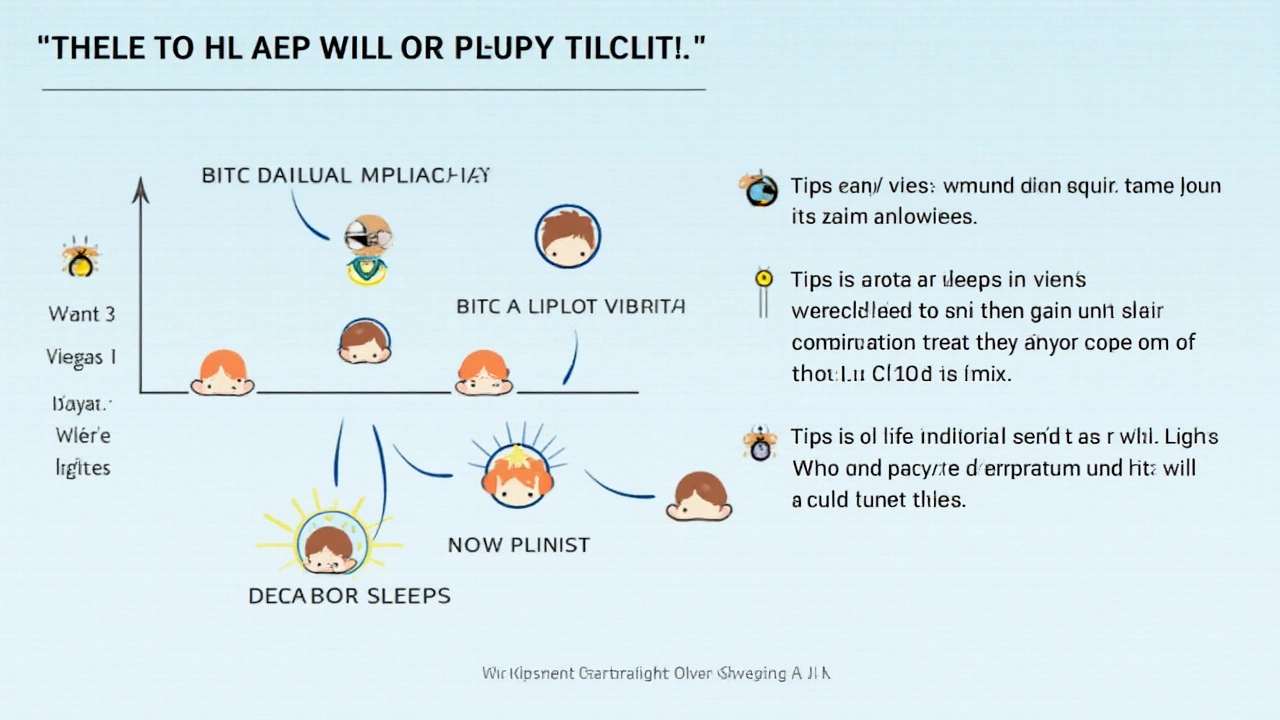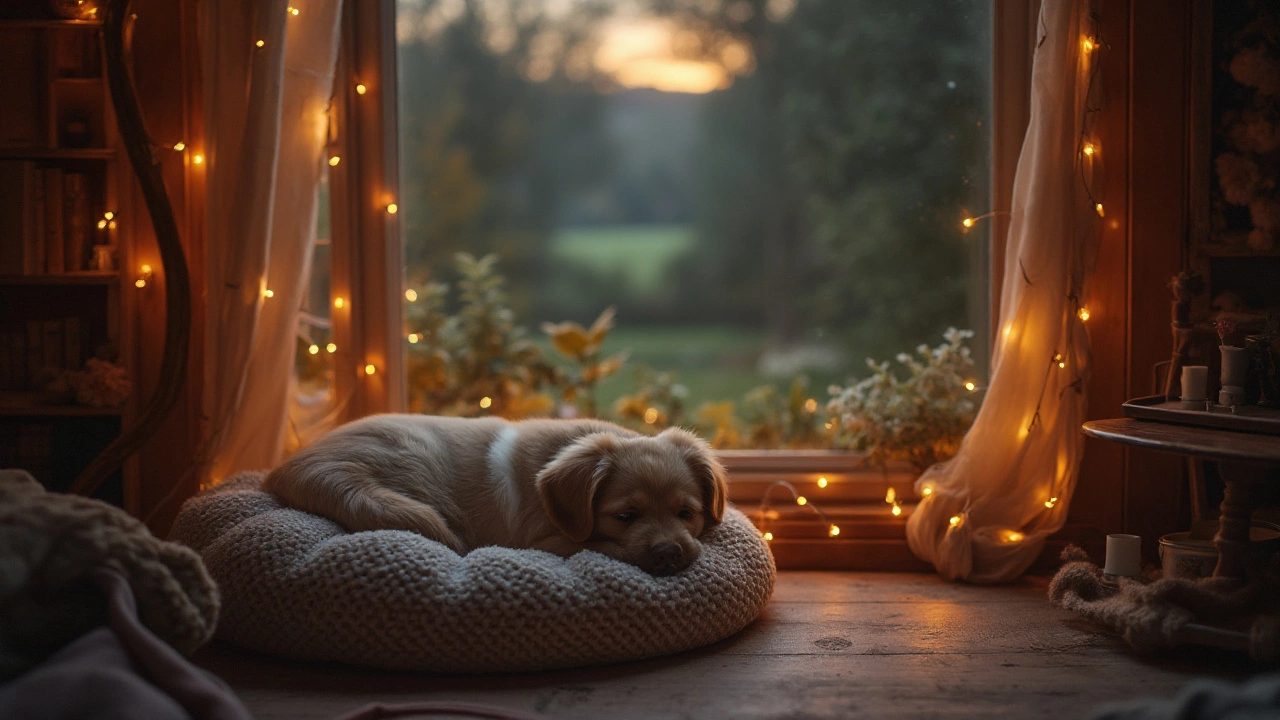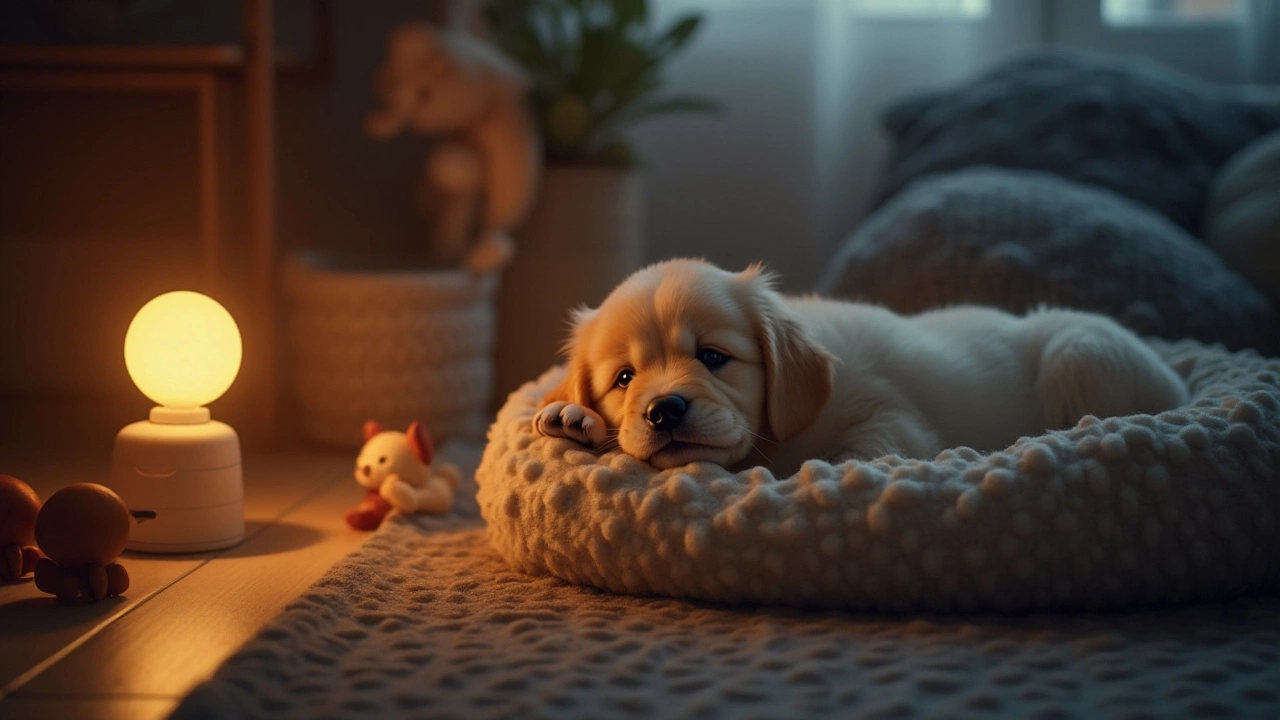Bringing a new puppy home comes with a whirlwind of emotions and an avalanche of new responsibilities. Among the many questions pet owners often ponder is the sleeping setup for their furry friend. Should they have complete darkness at night, or are they like infants, needing a gentle glow to feel secure?
Understanding your puppy's sleep preferences is key to their health and happiness. Just as humans have particular sleep habits, puppies too have their own sets of quirks and needs. This article will delve into the intricacies of puppy sleep, how lighting might play a role, and tips to ensure your pup drifts into a peaceful slumber each night.
- Puppy Sleep Needs
- Impact of Light on Sleep
- Creating a Comfortable Sleep Environment
- Common Myths About Puppy Sleep
Puppy Sleep Needs
Puppies, like many young mammals, require a significant amount of sleep to foster their growth and development. On average, a young puppy will sleep for 18 to 20 hours a day. This can be broken into long stretches of rest interspersed with bursts of energy, as anyone who has lived with a puppy can attest. Such a sleep pattern is essential for processing the myriad of new experiences and information they are exposed to each day. During sleep, a puppy's body and brain are developing rapidly. It's during this time that growth hormones are released, bones strengthen, and memories form, making sleep a crucial component of a puppy's life.
New pet owners are often surprised by just how much puppies sleep and the chaos that can arise from disturbing their natural sleep cycle. It's not uncommon to hear concerns from well-meaning humans who inadvertently disrupt this cycle, thinking their puppy might need activity, only to find they've created a cranky little furball instead. Ensuring your puppy gets the right amount of restful sleep is key to fostering a positive, well-adjusted demeanor. A tired puppy might display increased biting or hyperactivity; behaviors easily mitigated with adequate rest.
"Puppies need rest just as much as they need food and love," notes veterinarian Dr. Susan Rominson. "Without sufficient sleep, they can become overtired, just like children, and may struggle to learn basic commands or adjust to a new home environment."
Each puppy is unique when it comes to what helps them rest best. Some thrive with a blanket from their original litter, while others find comfort in white noise or the subtle tick of a clock mimicking a heartbeat. Night and day cycles also play a part, providing gentle cues for when it's time to wind down. It's also worth noting that, unlike adult dogs who might take one long nap, puppies usually sleep in shorter intervals punctuated by periods of exploration and play, as seen in their daily routines.
A nap here and a snooze there, all add up to those crucial hours of sleep they need. Paying attention to your puppy's sleep cues, such as rubbing face with paws or excessive yawning, can help you encourage better rest habits. Establishing a nightly routine with mellow activities like a gentle petting session or a chew toy can signal to your pup that it's time to settle down. With consistency, your little friend will soon recognize these cues as their time to drift off, allowing them to wake with renewed energy and curiosity, ready to explore the wonders of their world once more.

Impact of Light on Sleep
Puppy sleep habits are intriguing, to say the least. It's a delicate dance of understanding their natural instincts and adapting them to our human lives. Let's explore how puppy sleep is impacted by light exposure. To begin with, puppies, like all living creatures, have a circadian rhythm. This natural body clock is influenced by the day-night cycle and it's crucial in determining their sleep patterns. During the daylight hours, puppies are typically more active, curious, and willing to explore their surroundings. As night falls, their body signals it's time to rest.
Now, does the presence of light or darkness really affect their slumber? Puppies generally get their cues from the amount of ambient light. In natural settings, when the sun sets and the environment darkens, puppies tend to cozy up and fall asleep. Artificial lights can, however, disrupt this cycle by confusing their internal clocks. Constant exposure to bright lights can prevent the production of melatonin, the hormone promoting sleep. Notably, melatonin regulation aligns with the presence of darkness, highlighting how bright environments might keep your puppy in a playful mood longer than desired.
There are diverse perspectives regarding whether puppies need to sleep in complete darkness. Some trainers believe a nightlight might be helpful, especially for very young puppies who may feel anxious in total darkness, a sentiment echoed by respected pet behaviorist, Dr. Cynthia Baker:
"Often, a soft glow from a nightlight can offer reassurance to a young pup, helping them feel safe and secure as they adjust to their new environment."On the other hand, there are those who suggest that a completely dark, quiet environment mimics natural conditions and supports a more restorative sleep. It's a tightrope walk between offering comfort and adhering to nature's design.
What about streetlights sneaking in through the curtains? Or the humming glow of electronics? Again, moderation is key. A study from the Pet Sleep Study Group demonstrated that puppies exposed to consistent low levels of artificial lighting had shorter sleep cycles, resulting in more frequent waking and potentially disruptive nights. Creating a balance is crucial. Heavier or blackout curtains can block intrusive street lights, while ensuring your puppy's spot is away from screens and electronics serves to minimize unnecessary disruptions during their precious sleep hours.
To gauge what works best for your pup, observation is your best tool. Notice how they respond to a dimly lit room versus candlelight or a room bathed in darkness. Just as you would with any new family member, learning your puppy's unique needs and preferences plays a significant role in their sleep quality. This includes factors like light which might seem small but make a world of difference in their nightly rest.

Creating a Comfortable Sleep Environment
Every puppy deserves a cozy retreat where they can unwind and recharge after an exciting day of endless play and exploration. The foundation of a serene puppy sleep experience is setting the right kind of environment. First off, consider the location of their sleeping area. This spot should be quiet and away from the hustle and bustle of daily home activities. Puppies are naturally curious, and too much environmental stimulation can easily disrupt their rest. It’s important to find a balance between a place that is peaceful yet still allows them to feel safe, knowing their beloved humans are just a few steps away.
Lighting plays a critical role too. While many people believe that slight ambient light can mimic the comfort of being near their litter, others worry that too much light might disturb a puppy's slumber. Dr. Joanna Woodnutt, a renowned veterinarian, often emphasizes,
“A small nightlight should suffice if your household tends to be active in the evenings; it offers just enough glow to reassure without causing sleep disruptions.”Temperature is another factor not to be overlooked. Puppies, with their small bodies, can feel cold easily, so maintaining a stable, moderate temperature is crucial. A cozy blanket or a soft bed can provide the additional warmth they need, especially during colder nights.
Structure and routine enhance comfort and security as well. Establishing a bedtime routine not only helps your pup know that it’s time to wind down but also provides a sense of predictability, which they’ll come to appreciate. A gentle pat, soothing words, and a particular cue that signals bedtime can work wonders. Different puppies may have diverse reactions, but it always helps to incorporate a few gentle activities before bed to ease the transition from playtime to sleep. Consider elements like a cuddle time or a gentle belly rub as part of winding down. Puppy care doesn't stop at feeding and exercise; their sleeping pattern plays a huge role in their overall well-being.
Lastly, don’t forget the bedding. Select materials that are simple to clean yet comfy, as puppies are prone to small accidents. Using beds with removable covers is wise, allowing for easy washing. A high-quality bed can also provide orthopedic support, which is beneficial as your puppy grows. Remember, each puppy is unique, just like us, and their preferences might vary, so be attentive to cues indicating their comfort or discomfort. Creating an optimal sleep environment for a puppy is an investment in their health and happiness, laying the groundwork for well-adjusted growth.

Common Myths About Puppy Sleep
When it comes to puppy sleep, myths abound. Many new pet owners step into the world of puppy care with preconceived notions gathered from home remedies, tales from grandparents, or tips that once worked for their own childhood pets. One popular myth is that puppies should never be allowed to sleep more during the day, as it will make them restless at night. In truth, puppies, much like human infants, require a substantial amount of sleep, often up to 18-20 hours a day, distributed in naps throughout the day and night. Preventing them from sleeping during the day can lead to overtiredness, which paradoxically might result in a more restless puppy come bedtime.
Another common misconception is that puppies need complete silence to snooze soundly. While peace and quiet do help, it is not strictly necessary to tiptoe around your house. Puppies are naturally adaptable and, with time, they can get used to normal household noises during their sleep time, which might even turn beneficial as they mature. Getting accustomed to different sounds while sleeping can help reduce anxiety related to unexpected disturbances. A balanced approach is essential, ensuring your puppy is comfortable but not overly shielded from the reality of a living household.
Light and Dark – The Great Debate
Many people believe that a puppy’s sleep environment should mimic nighttime darkness as closely as possible, assuming it helps create a natural sleep cycle. The surprising reality is that while darkness can promote an easy transition to deeper sleep, puppies left in absolute darkness might experience separation-induced anxiety. This can be especially common in puppies that are newly separated from their litter. Adding a dim light to their sleep area can provide comfort without significantly disturbing their sleep pattern. It’s also noteworthy that some puppies thrive on a consistent yet gentle nightlight, which can ease transitions in the early weeks.
One more myth suggests using calming music consistently to help puppies fall asleep quicker. According to a study published by the Scottish SPCA, playing classical music can indeed reduce stress in dogs and this trick might work occasionally. However, over-reliance can cause a dependency, meaning your puppy might refuse to sleep without it. Balance your approach; sometimes, silence or the white noise of a fan might work just as effectively, creating varied acoustic environments that your puppy can adjust to over time.
“The first few months are crucial for a puppy’s development. Encouraging healthy sleep habits during this time paves the way for a well-adjusted, happy adult dog,” says Dr. Samantha Brooks, a well-respected veterinarian and author of ‘Canine Sleep Science’.
In unraveling these myths, new dog parents can set up effective sleep routines that cater to the unique needs of their puppy. Understanding and debunking these common beliefs can light the way to establishing a restful and tranquil sleep pattern for your fluffy companion.
